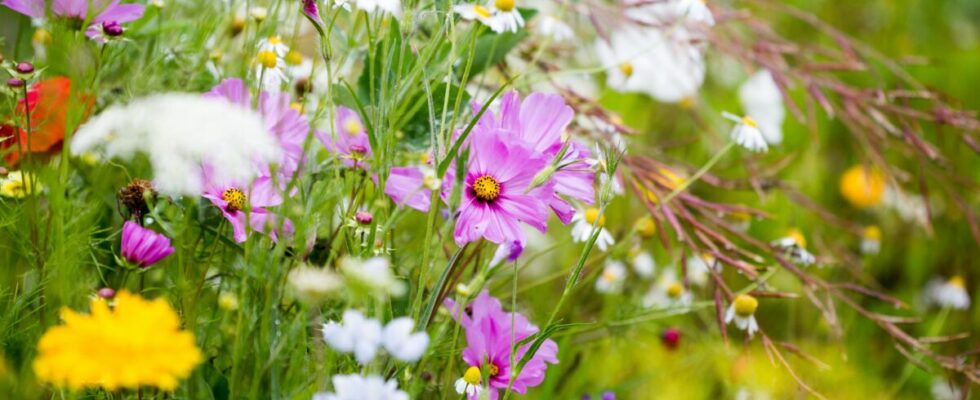Insects and bees play an essential role in the biodiversity of our gardens. Their presence promotes pollination of plants, which allows the reproduction and production of fruits and seeds. Additionally, they serve as a food source for many other organisms, thus contributing to ecological balance. By encouraging these little creatures into our green spaces, we promote the overall health of the ecosystem.
A flower meadow in his garden
Protecting bees and other pollinating insects is essential to biodiversity and our food. To attract these useful little creatures, simply decorate your garden with honey flowers, often colorful and fragrant. We speak of “flower meadows” whatever the size.
Prepare the ground. Choose a space in the sun. Hoe the earth, then remove weeds and other stones. You cannot sow flower meadows on grass, the grass would prevent the seeds from developing.
Mix the seeds with sandit will be easier to spread on the fly.
Sow (from March-April) or plant (from May), very varied flowers whose flowering spreads over a long period. In fact, bees have an increased need for food from spring to fall.
Be light-handed. Then rake so as to push the seeds into the ground (about 1 cm) and water abundantly at the beginning then regularly in the weeks that follow.
What plants and flowers on your balcony?
No need for a large exterior to create a little pollinator paradise. All it takes is a window sill decorated with planters, whichwe shelter from the wind, otherwise the insects will not appreciate it. We turn to lavender, verbena, sage, geraniums, nasturtiums, lobelia, asters… and, of course, aromatics. Do you have some space? Plant a wisteria or honeysuckle in a pot.
What honey plants attract bees the most?
Prefer those that are popular in your region. Richest in nectar and pollen are: yarrow, columbine, aster, cornflower, borage, heather, bellflower, catnip, ceanothus, summer rapeseed, poppy, dahlia, foxglove, echinacea, purple, geranium, hyssop, lavender, lilac, bird’s-eye trefoil, lupine, daisy , wild mallow, hollyhock, rudbeckia, pink soapwort, sedum, marigolds, sunflower, white clover, bugloss… Small red fruit trees; wisteria, honeysuckle, climbing ivy and aromatics (sage, rosemary, savory, etc.).
